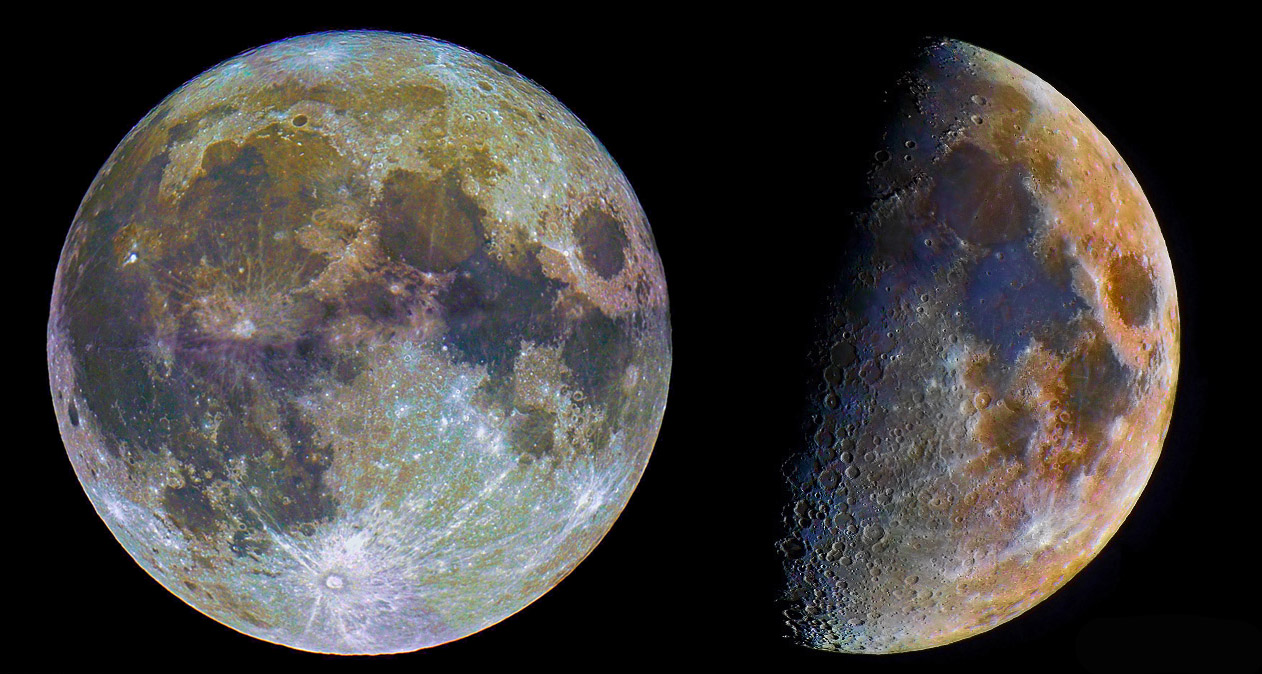
left image by Shahriar Davoodian, Tehran, Iran, and right image by Mohammad Shirani, Dubai ,UAE
The Moon shines over the entire Earth, but virtually all of the images ever submitted to LPOD come from North America, Europe and Japan. These two complementary ones were taken by Iranian amateur astronomers, one living in Tehran and one in Dubai. These exaggerated color views demonstrate well the color variations of the maria and also that there are few colors in the highlands except the brightness of rays. The highlands are relatively homogeneous in composition because they were all created as a global crust when the Moon was molten. The energy for melting came from the millions of collisions that accreted the Moon from ejecta from a giant impact onto the proto-Earth. Maria have a greater range of compositions because their magmas formed at different times, at different depths and with different degrees of melting. And these two Iranian Moons help us understand that.
Technical Details:
Left image: August 19,2005. Meade 8″ LX90 with UHTC @ f/10 + Canon EOS 300D, 1/320 at iso 400 + Adobe Photoshop CS2; 4 panel mosaic - prime focus.
Right image: January 27, 207. Vixen R200SS + tele extender f7.5 + Canon EOS 350D @ iso 400; 16 Panel mosaic with eyepiece projection (20 mm eyepiece); Increasing contrast and colors by Photoshop.
Related Links:
Shahriar’s website
Yesterday's LPOD: Why Not?
Tomorrow's LPOD: A Single Peak



